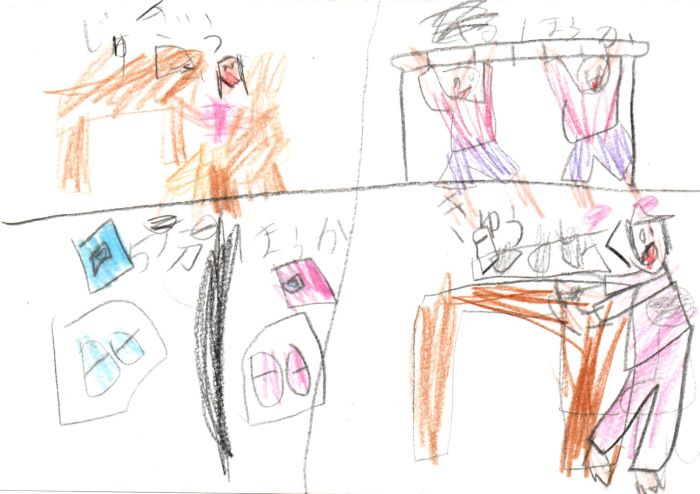
学校は1時間目から6時間目まであります。1時間目があって終わったらチャイムが鳴って5分放課があります。2時間目が終わると25分放課です。チャイムがなると3時間目が始まります。3時間目のあとも5分放課です。チャイムがなると4時間です。そしてチャイムがなると給食です。4時間目の途中で、教室の前の廊下までワゴンで給食が運ばれてきます。給食はお当番さんがお皿についで、配る係の人が配ります。みんなでいただきますをします。食べ終わると食器係がワゴンに食器を返します。給食のあとは掃除です。掃除が終わると昼放課です。チャイムが鳴ったら5時間目が始まります。5時間目のあとに5分放課があって6時間が始まります。6時間目が終わったら帰ります。
At my school we have 6 periods. When the first period finishes, the bell rings, then we have a 5 minutes break. After the second period, we have a break for 25 minutes. Then when the bells rings, the third period starts. After the third period, there is a break for 5 minutes, the bell rings, and then fourth period starts. Then, when the bell rings, it is lunchtime. During the fourth period, school lunch is brought in on a wagon in the front of the class room. Each week a different student is in charge of plating the lunches up. A different student will hand out the plates. We all say grace together. After we finish eating, the student in charge of collecting plates, collects them. After lunch we clean up. When we’re done cleaning, we have afternoon break. When the bell rings, the fifth period starts. After fifth period there is a 5 minute break, then sixth period begins. After sixth period, we go home.
WORDS
- 1時間目(いちじかんめ)=the first period
- 5分放課(ごふんほうか)=5 minutes break
- 運ぶ(はこぶ)=bring
- お皿につぐ(おさらにつぐ)=plate
- 配る(くばる)=hand out
- 家に帰る(いえにかえる)=go home
REMARKS
いただきます
In Japanese, rather than saying grace the way we are used to, people say “itadakimasu” which means literally “I respectfully receive”. It implies a feeling of gratitude to the food itself and the people who made it, so we get to enjoy it.


